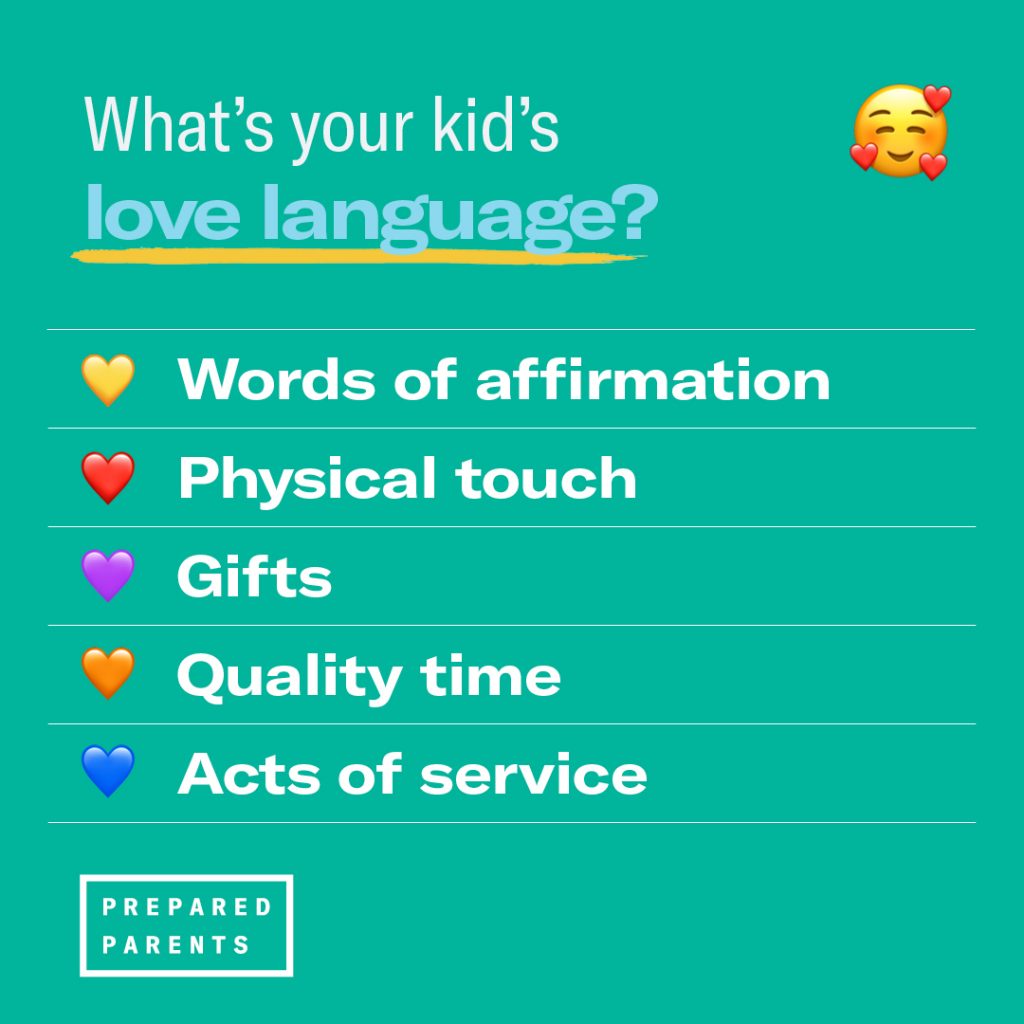When was the last time you grabbed your kid and pulled them into a bear hug or made their favorite chocolate chip pancakes for breakfast? Have you spent a few minutes of uninterrupted time together or stepped in to help them with an especially challenging math problem? These are all ways we let our kids know we love them. We’re responding to their love language, a concept popularized in a series of books by author Dr. Gary Chapman.

Learning to speak your kid’s love language not only creates a stronger bond between parent and child, it improves both physical and mental health, helps kids to be less fearful, and increases brain development and memory.
According to research conducted by Child Trends—a nonprofit focused on improving the lives of children and their families—warm, loving parent-child relationships result in higher self-esteem, better parent-child communication, and fewer psychological and behavior problems. Responding to our kids in their love language builds resilience by providing emotional, motivational, and practical support. This strengthens their response to the challenges they may face.
Step 1: Find your own love language
There are five love languages as defined by Dr. Chapman:
- Words of affirmation
- Physical touch
- Gifts
- Quality time
- Acts of service
To understand which love language to speak to your kid, discover your own with this free online quiz. Just like kids, adults have more than one. You may appreciate kind, supportive words and also respond to hugs and kisses. The adult who enjoys receiving gifts may also value quality one-to-one time or some freely given help with a project. Understanding how you receive love can also help you understand the ways you typically show love.
Step 2: Be multilingual
Babies respond to all five languages. They are too young to show a preference. Their primary one becomes evident when they’re kindergarten-aged, but that doesn’t mean they won’t react to the others throughout life. Spend some 1:1 time with your kid to discover their love language. In as little as ten minutes, you can begin to discern the ones that elicit the strongest responses.
Step 3: Decode your kid’s language
You can take the quiz to find your kid’s love language, but you can also discover it by spending time together.
- Use words of affirmation to build confidence. Confident kids believe in their abilities and that’s a great predictor of their capacity to achieve. Try the Confidence in Me activity (download below) which includes sixty positive affirmations that will remind your kid they’re strong, capable, and up for any challenge.
- Cuddle together. Physical touch creates a sense of safety and belonging. It’s one of the ways we show our kids they matter. Mattering is the belief that we make a difference in the world around us. It’s a strong bond known as secure attachment.
- Give small gifts. This doesn’t mean spoiling your kid with lavish presents. It’s about giving thoughtful tokens that let them know, I see you, and if you see your kid, you’re putting yourself in their shoes, one way to practice empathy.
- Spend some quality time together. Uninterrupted time in each other’s company speaks volumes. Use the time to tell a story. It creates an intimacy that’s hard to capture during most other activities. When a kid asks you to tell a story, they’re making a request for a relationship. Storytelling builds a bond of closeness and trust.
- Respond to their call for help. An act of service like helping your kid with a challenging task shows them they can count on you. Seeking appropriate help is one of the five power behaviors of a self-directed learner. Kids who know when to ask for help are learning to not give up on a task that may feel too tough. Your help shows them they’re not alone.
Speak to your kid in the language of love they understand best, then ask them if they know yours. Pretty soon you’ll be speaking and translating for each other.

